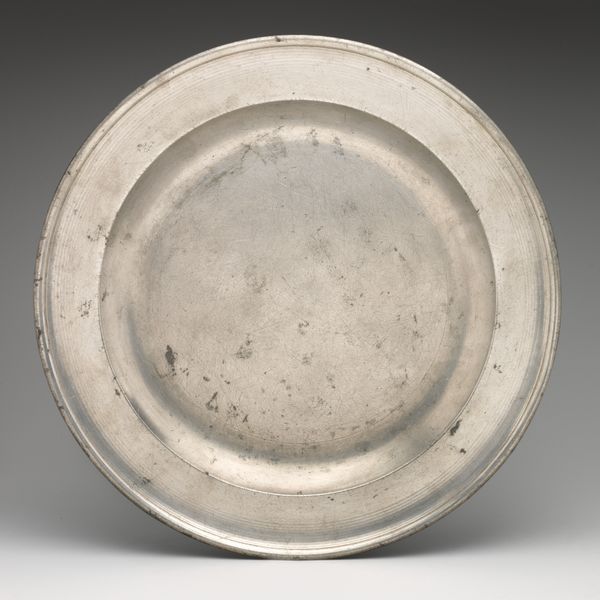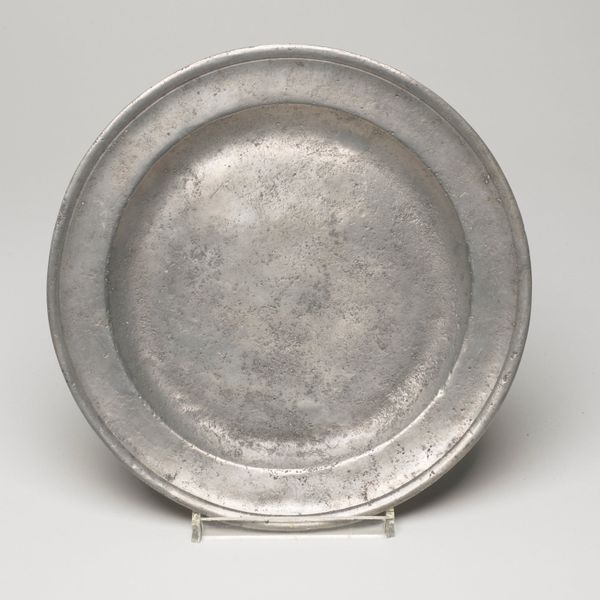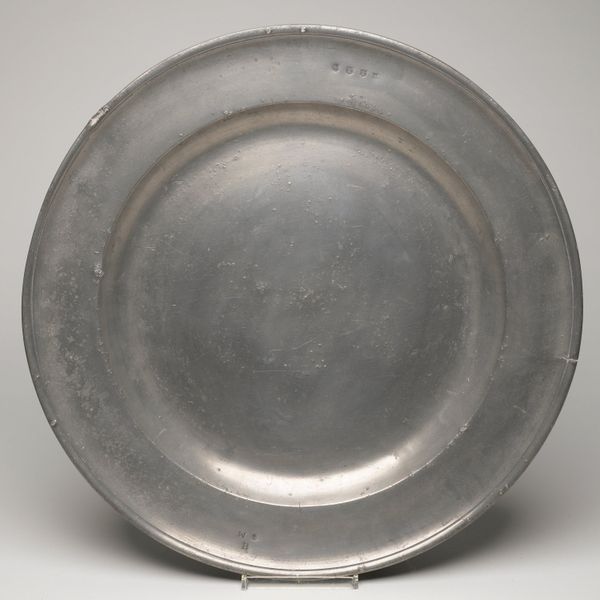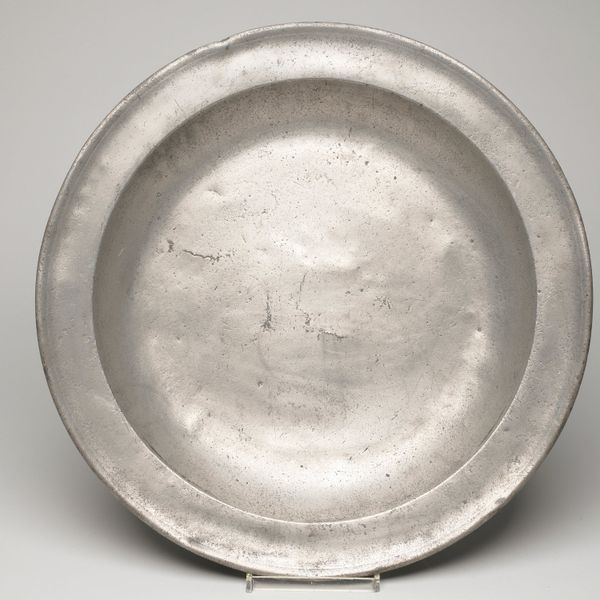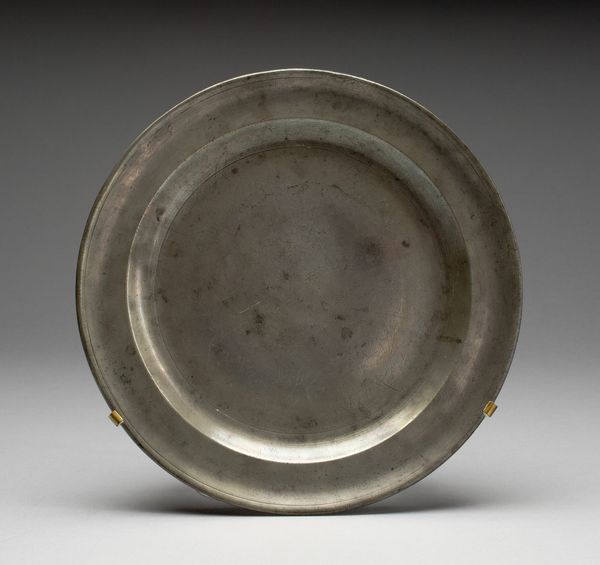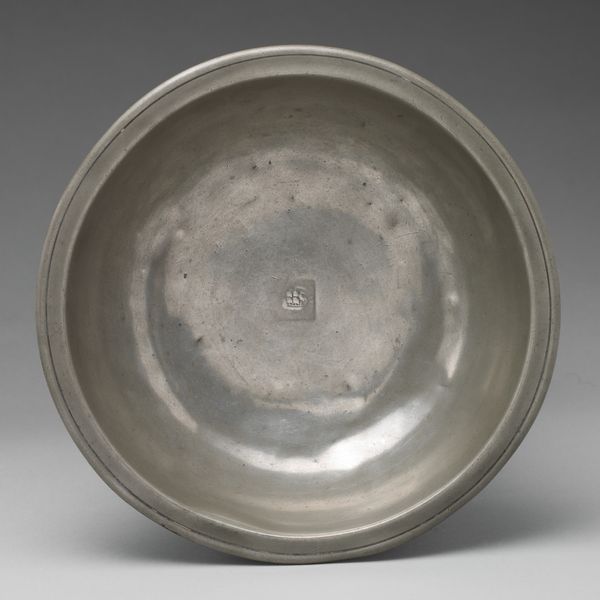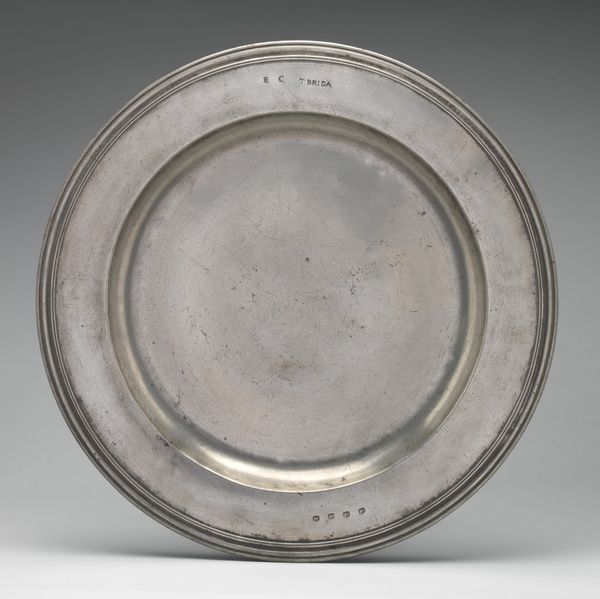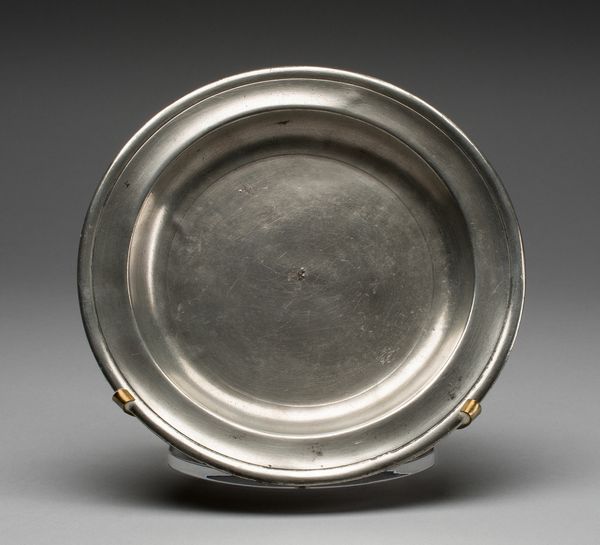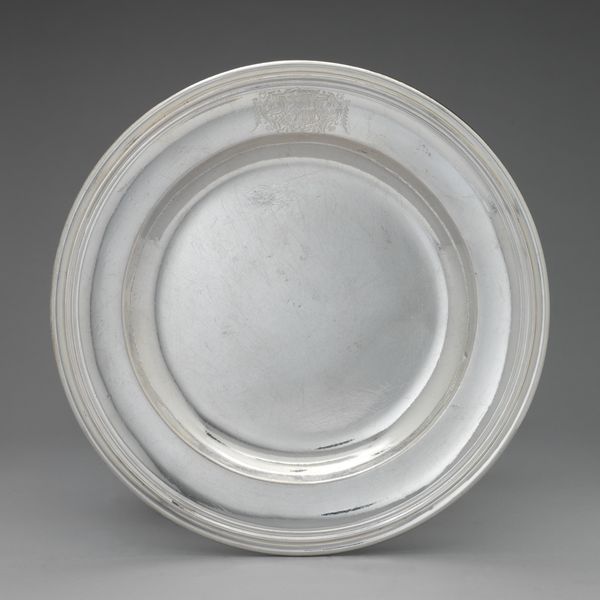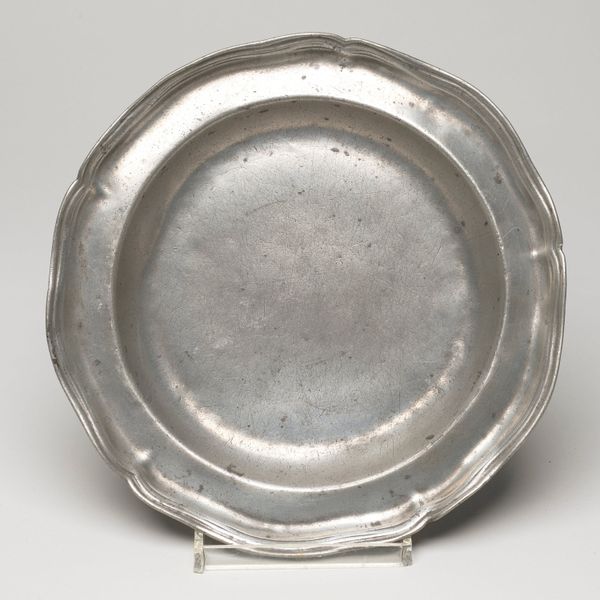
ceramic, sculpture
#
ceramic
#
stoneware
#
coloured pencil
#
sculpture
#
ceramic
#
decorative-art
Dimensions: Diameter: 9 in. (22.9 cm)
Copyright: Public Domain
Editor: So, we’re looking at a pewter plate made between 1757 and 1784, artist is George Grenfell. It looks deceptively simple, but there's a kind of solemn beauty to it. It's also surprisingly heavy! What catches your eye when you look at this, though? Curator: The weight, you say? Precisely! Its heft is a direct link to the past. Pewter, you see, isn't just a material; it's a cultural echo. Before mass production, a plate like this was an investment, a symbol of stability. Notice the initials "NS" stamped into the surface. That mark wasn't mere decoration. What stories do you think those letters could hold? Editor: Maybe it signifies ownership, like someone's initials? Curator: Exactly! Ownership, lineage, belonging. The plate, then, becomes a repository of identity. Consider, too, the circular form—universal symbol of wholeness, continuity. Every meal served on this plate was a reaffirmation of family, community, tradition. Even the gray color speaks of its stoicism, its endurance. Do you agree it possesses a strong sense of utility? Editor: That's a really interesting take. Thinking of it as more than just a plate, but as a symbol. Curator: It invites us to contemplate not just *what* was eaten, but *who* gathered around it, *what* conversations took place. Each scratch and dent whispers tales of meals past. In what ways does our relationship with utilitarian objects differ today, would you say? Editor: Wow, I will definitely see things like this in a new light, knowing more about its history and meaning! Curator: Indeed, seeing these items, these markers of symbolic weight, as a continuous memory – a reflection.
Comments
No comments
Be the first to comment and join the conversation on the ultimate creative platform.
